Amphibians are some of the most fascinating and fragile creatures on Earth. Their unique ability to live both on land and in water makes them crucial to our ecosystems. Unfortunately, many of these species are facing alarming rates of decline. From habitat destruction to pollution, the threats are numerous. This article sheds light on unusual amphibians that are on the brink of extinction. Their survival hangs in the balance, and each one plays a vital role in the biodiversity of our planet.
Axolotl (Ambystoma mexicanum)
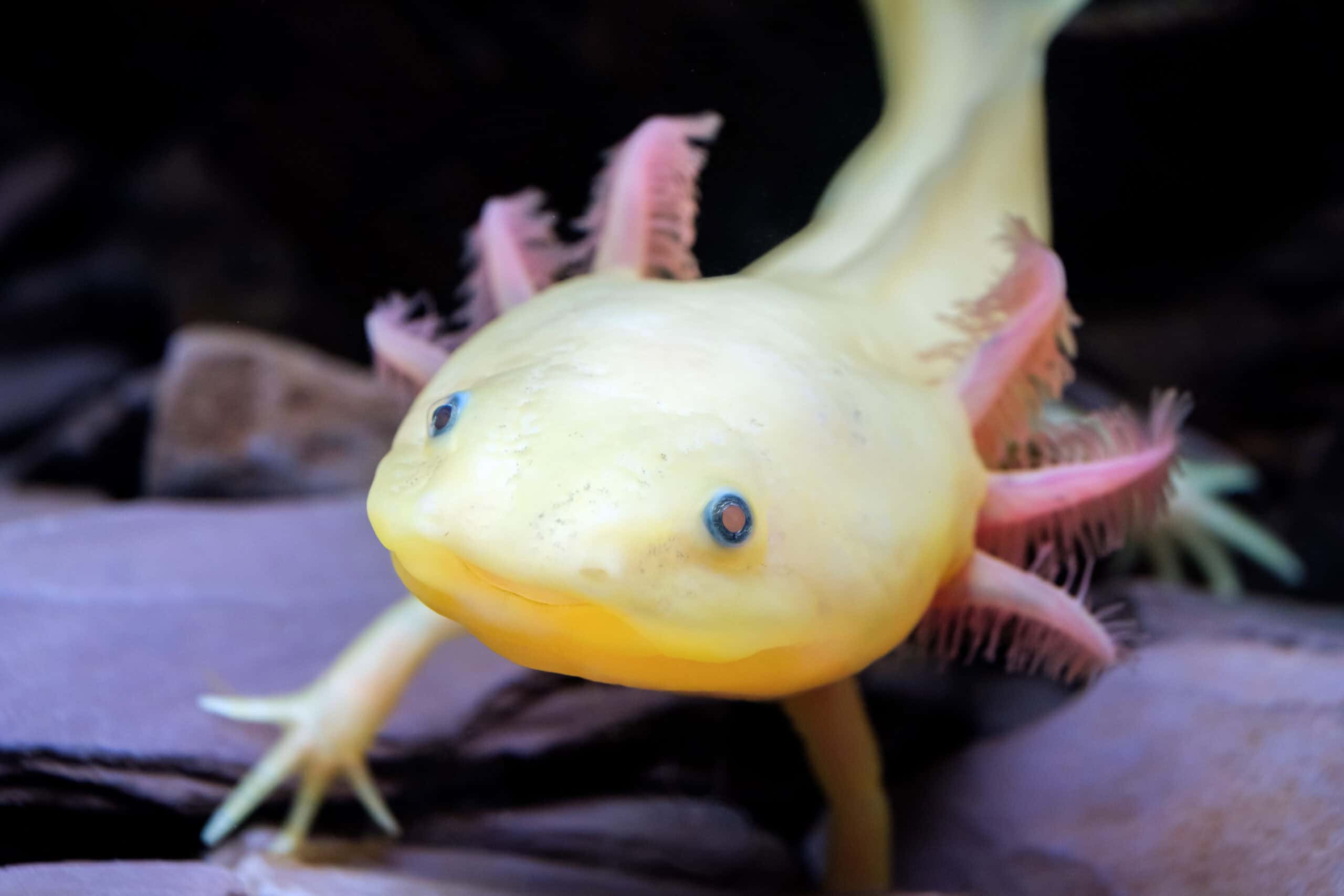
The Axolotl, native to Mexico’s Xochimilco canals, is one of the most famous amphibians for its incredible ability to regenerate limbs. This aquatic salamander remains in its larval stage for its entire life, unlike most amphibians. Axolotls are critically endangered due to habitat destruction and water pollution. Their population in the wild has dropped to less than 1,000 individuals. Conservation efforts, including captive breeding and habitat restoration, aim to prevent their extinction.
Chinese Giant Salamander (Andrias davidianus)
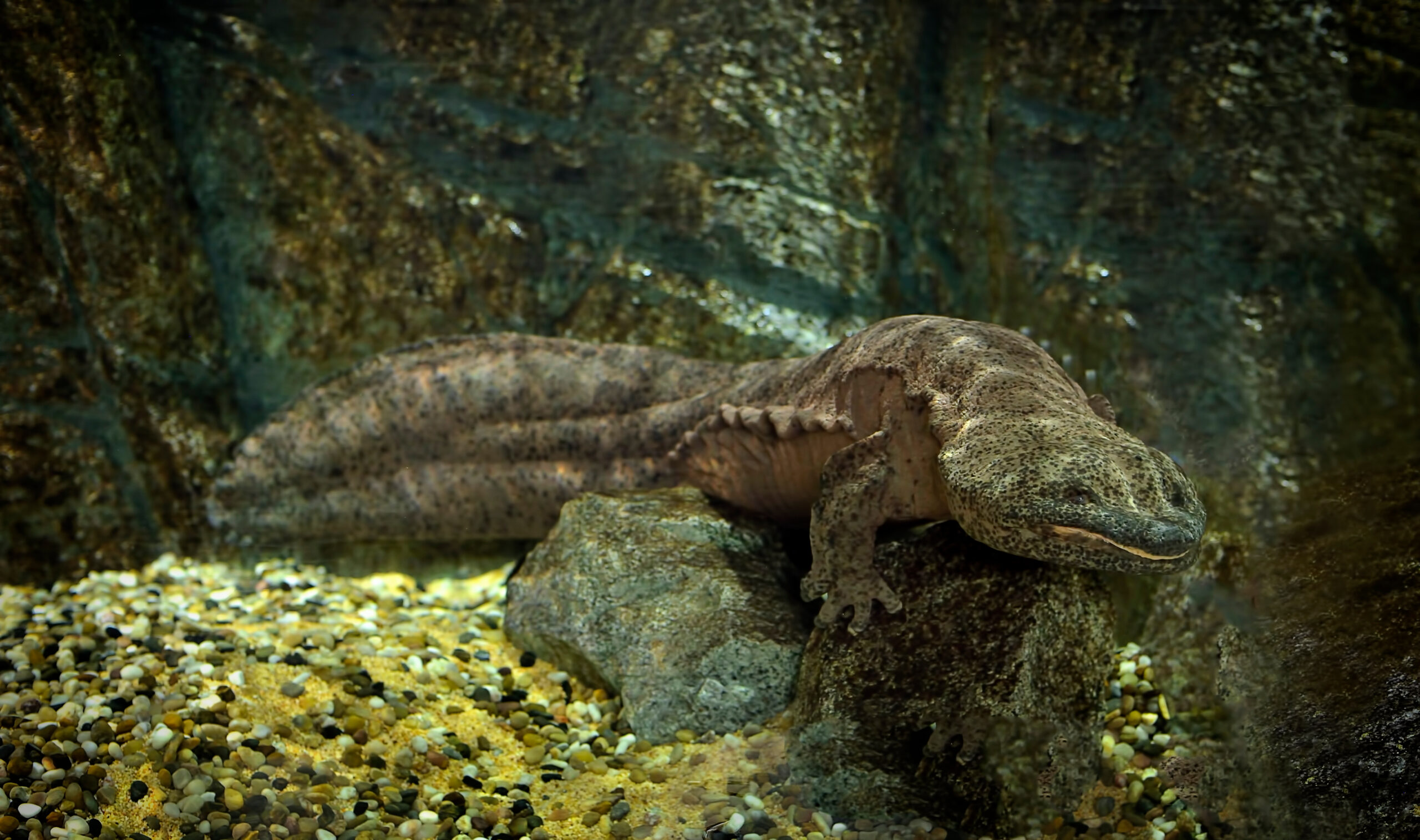
The Chinese Giant Salamander is the largest amphibian in the world, growing up to six feet long. Native to China’s rivers, it has been around for over 170 million years. However, over-harvesting for food and traditional medicine has decimated its population. Fewer than 50,000 individuals remain in the wild. Conservationists are working to establish breeding programs and protect remaining habitats.
Hellbender (Cryptobranchus alleganiensis)
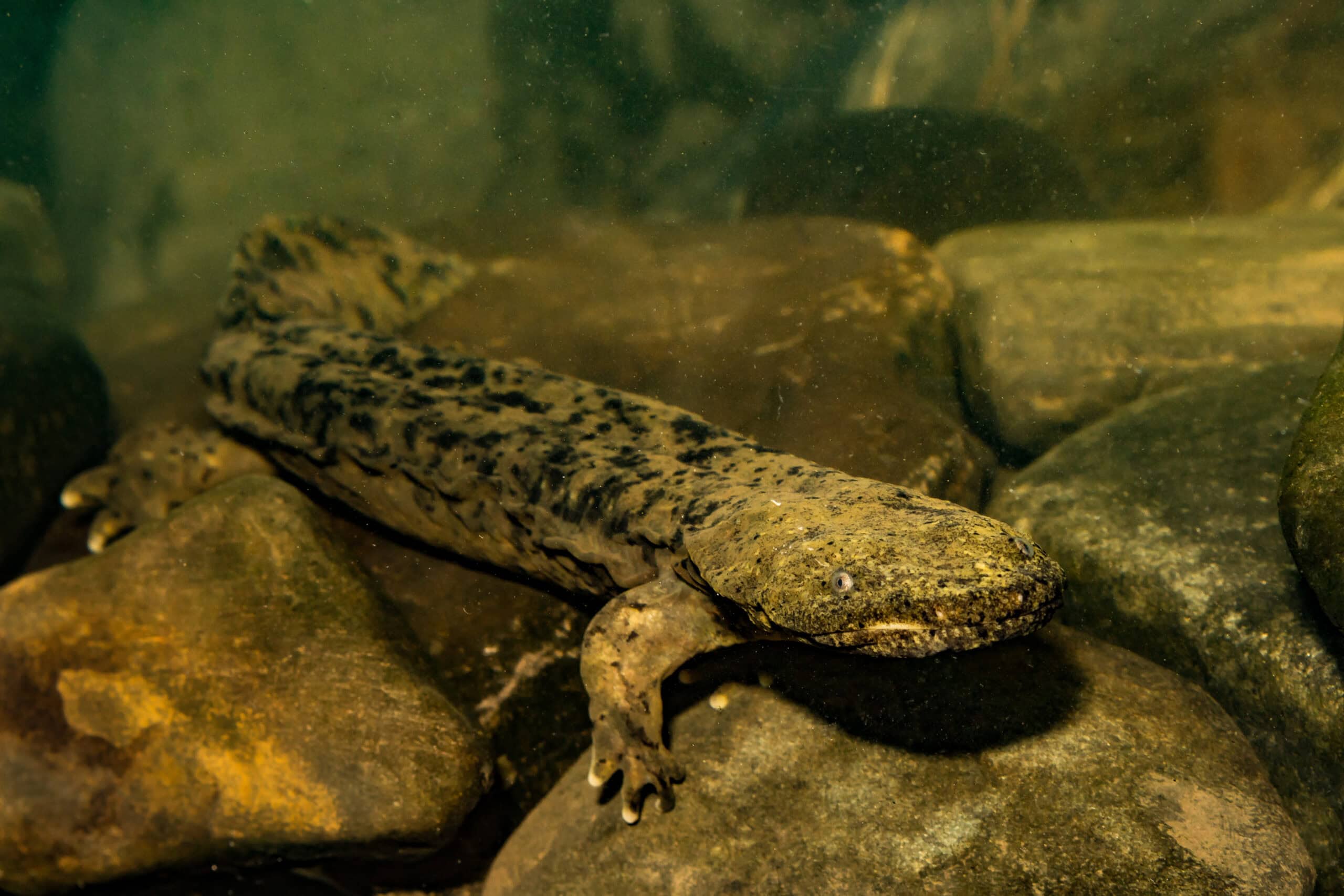
The Hellbender, also known as the “snot otter,” is one of the largest salamanders in North America. Found in clean, fast-flowing streams, it plays an important role in maintaining healthy ecosystems. The population is rapidly declining due to pollution and habitat degradation. Only fragmented populations remain, particularly in the Appalachian region. Efforts to improve water quality and protect habitats are critical for the survival of the Hellbender.
Golden Mantella (Mantella aurantiaca)
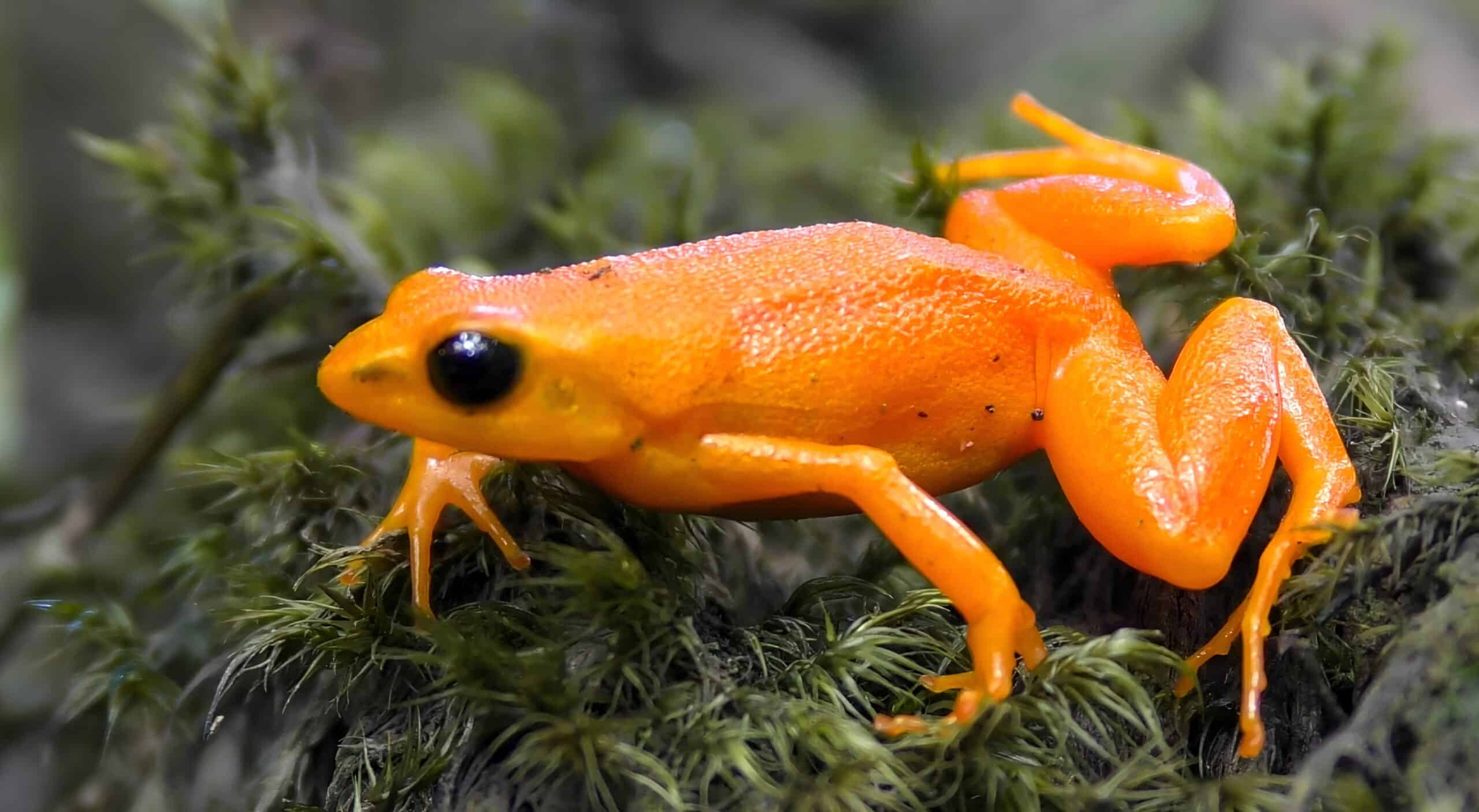
The Golden Mantella is a small, brightly colored frog native to Madagascar. Its striking orange hue warns predators of its toxic skin. This species is critically endangered, with fewer than 5,000 individuals left in the wild due to deforestation and illegal pet trade. Conservation efforts focus on habitat protection and breeding programs to boost its population.
Titicaca Water Frog (Telmatobius culeus)
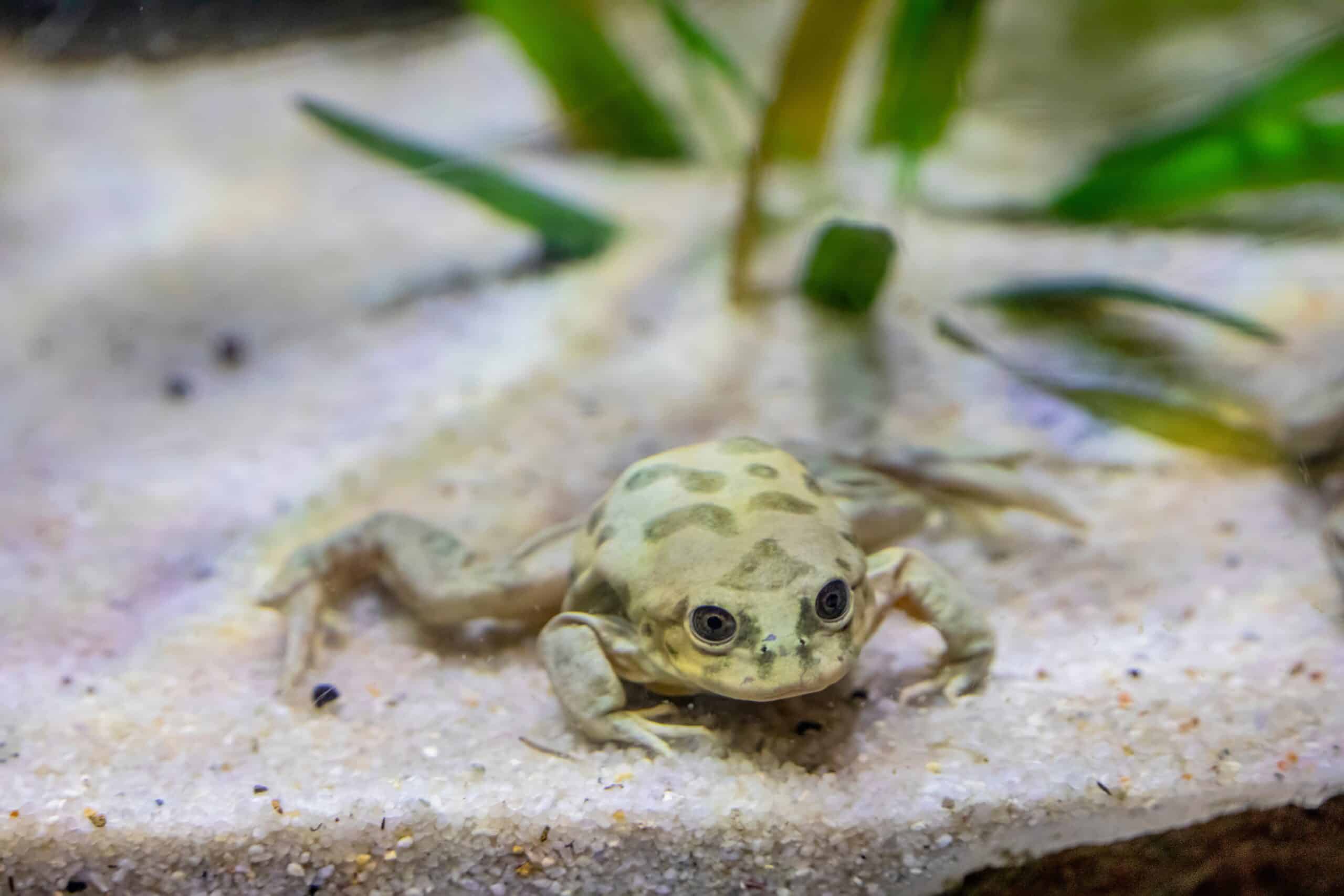
The Titicaca Water Frog is an entirely aquatic species found only in Lake Titicaca on the border of Bolivia and Peru. It is known for its wrinkled skin, which helps it absorb oxygen from the water. The population has been heavily impacted by pollution, invasive species, and overharvesting. Fewer than 50,000 frogs remain, and conservation programs are working to protect their shrinking habitat.
Kihansi Spray Toad (Nectophrynoides asperginis)
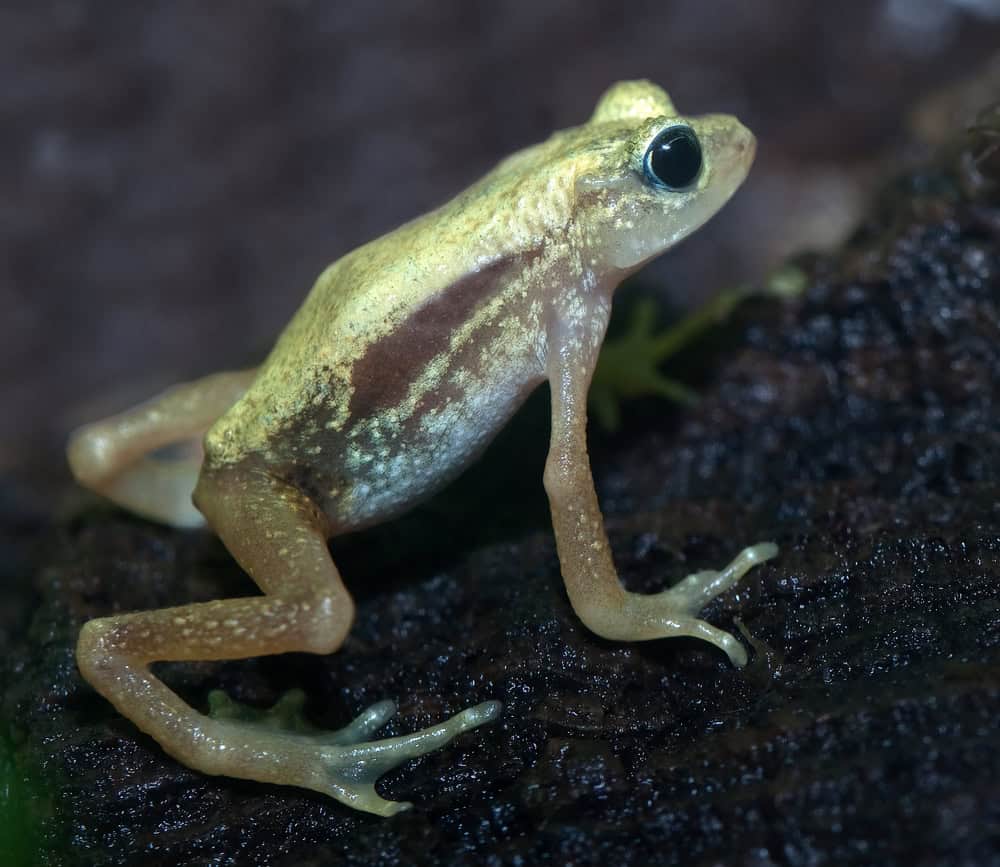
The Kihansi Spray Toad is a tiny amphibian native to Tanzania’s Kihansi Gorge. It relied on the fine mist created by a waterfall for its habitat. However, the construction of a dam disrupted this delicate ecosystem, leading to its extinction in the wild. Thanks to successful breeding programs, several individuals have been reintroduced into the wild, though their future remains uncertain.
Darwin’s Frog (Rhinoderma darwinii)
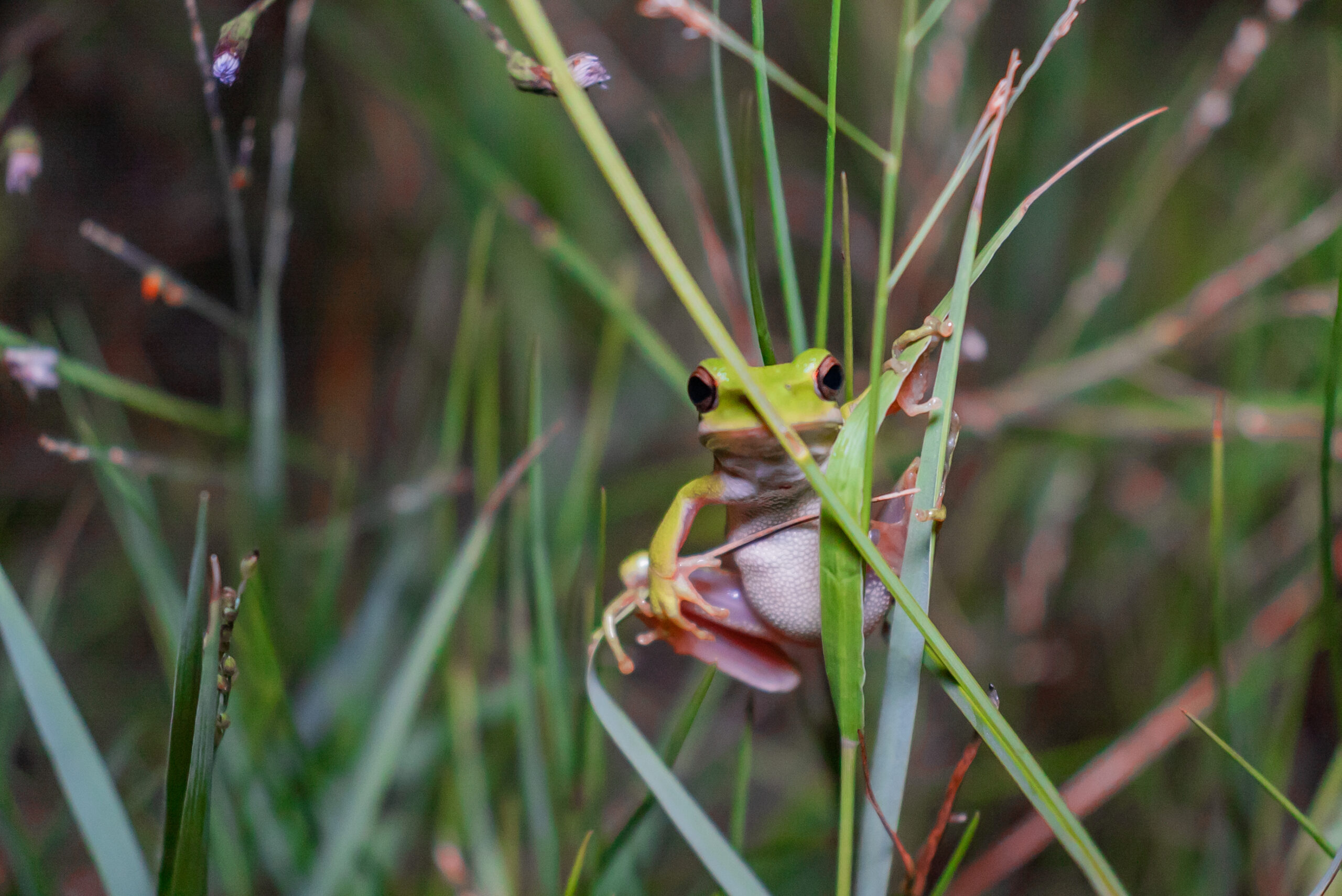
Darwin’s Frog is known for its unusual reproductive strategy, where males carry eggs in their vocal sacs until they hatch into froglets. Native to the temperate forests of Chile and Argentina, this small amphibian has a unique leaf-like shape, offering it excellent camouflage. Habitat loss and the deadly chytrid fungus have drastically reduced its population. Currently, its numbers are critically low, and it remains one of the most endangered amphibians in South America.
Malagasy Rainbow Frog (Scaphiophryne gottlebei)

The Malagasy Rainbow Frog is an incredibly colorful amphibian native to Madagascar’s rocky canyons. Its vibrant appearance and ability to burrow underground during dry spells are key survival traits. However, habitat destruction due to mining and agriculture has put this species in danger. With less than 5,000 individuals left, conservation efforts focus on preserving the remaining habitats and preventing illegal collection.
Spiny Hill Frog (Nanorana vicina)
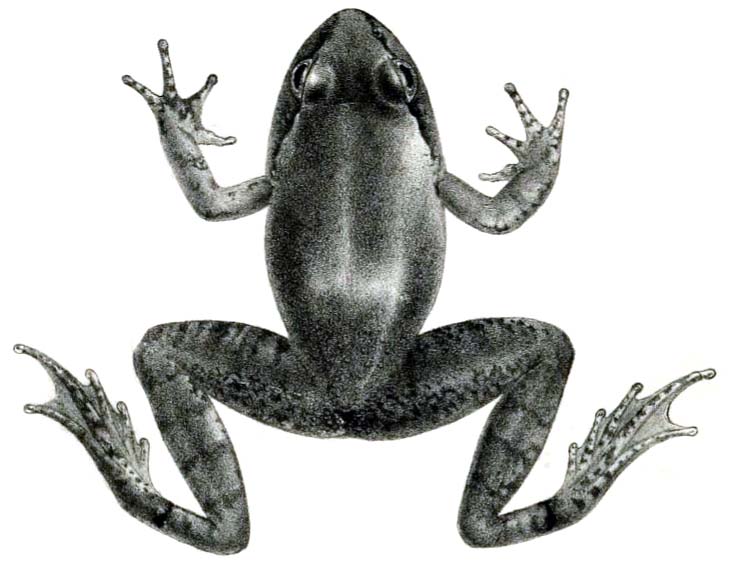
The Spiny Hill Frog, found in the Himalayan region of Nepal, is named for the spiny texture on its back. It thrives in cold mountain streams but faces increasing threats from habitat degradation and climate change. This species is extremely sensitive to changes in water quality. With fewer populations recorded in recent years, conservation measures are essential to maintain the delicate balance of its ecosystem.
Archey’s Frog (Leiopelma archeyi)
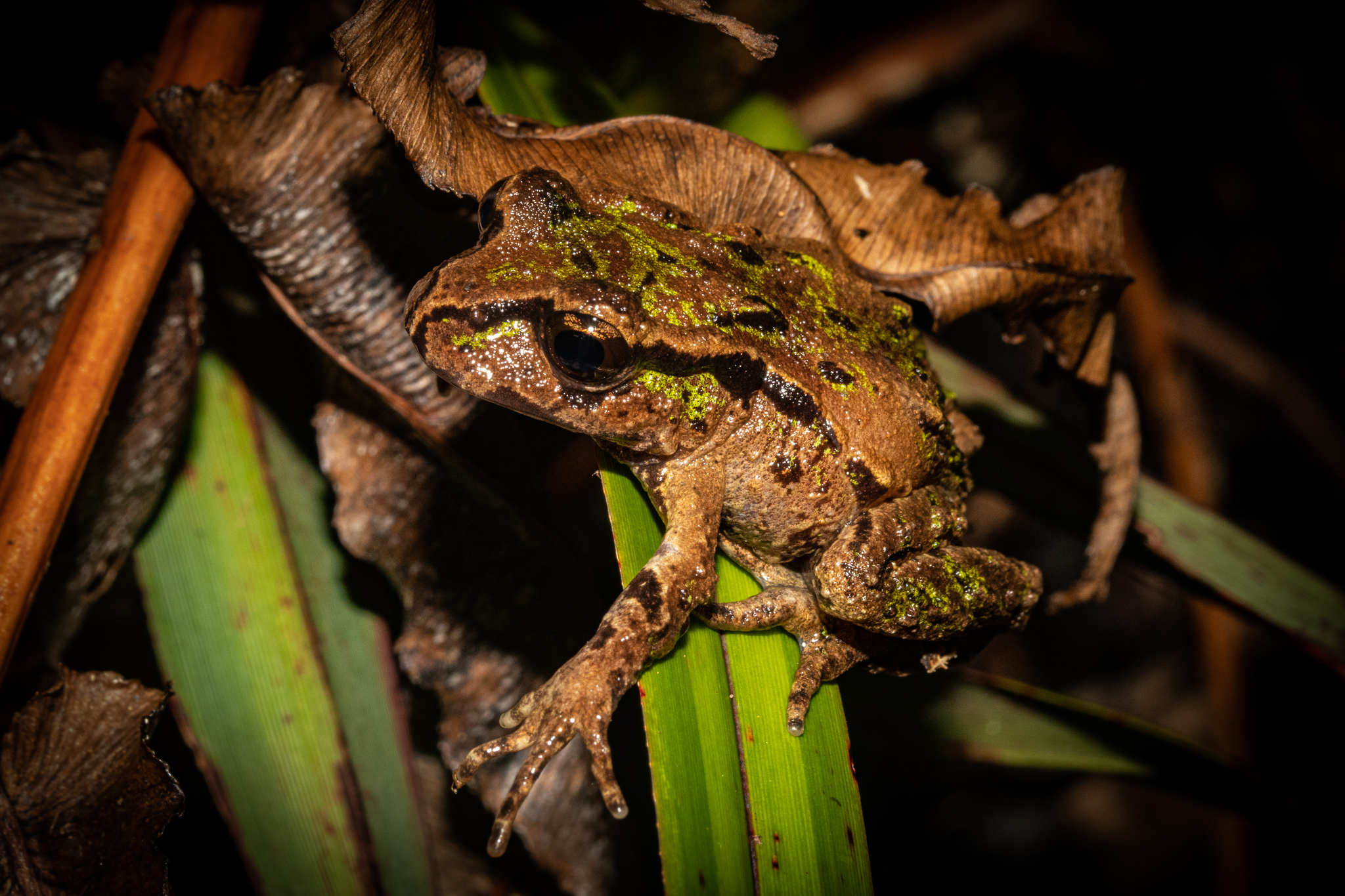
Archey’s Frog, native to New Zealand, is a tiny amphibian with ancient lineage. It has remained virtually unchanged for over 200 million years, making it a living fossil. Unfortunately, the chytrid fungus and habitat loss have devastated its population. Fewer than 20,000 individuals remain, and it is considered one of the world’s most endangered amphibians. Conservationists are focusing on disease management and habitat restoration.
Gastric-Brooding Frog (Rheobatrachus silus)
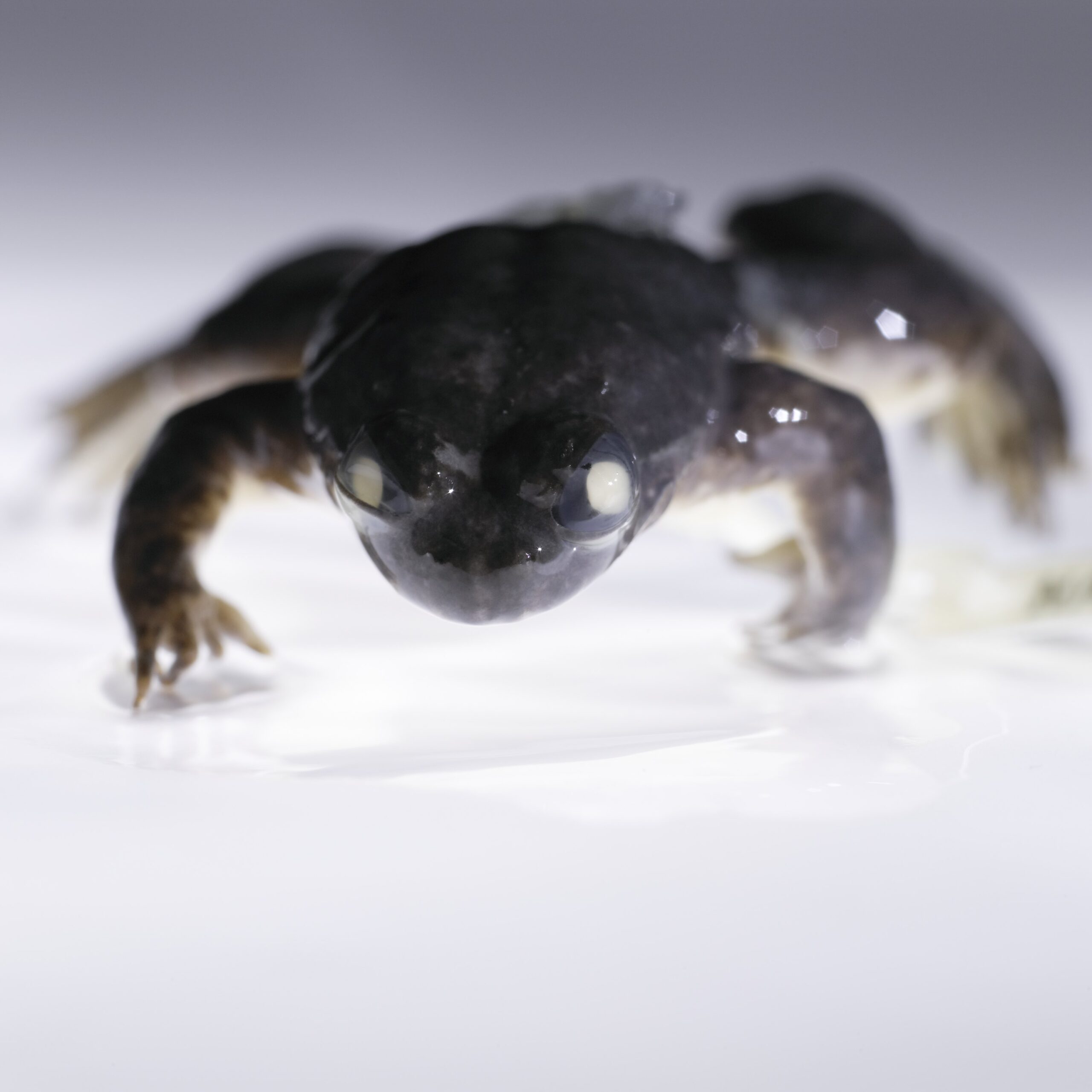
The Gastric-Brooding Frog, once native to Queensland, Australia, had a remarkable way of raising its young—inside the female’s stomach. Sadly, this unique frog was declared extinct in the 1980s due to habitat destruction and disease. Though extinct in the wild, scientists are exploring de-extinction technologies to possibly revive this species. For now, it remains a symbol of what amphibian conservation can learn from past failures.
Tree Hole Frog (Metaphrynella sundana)
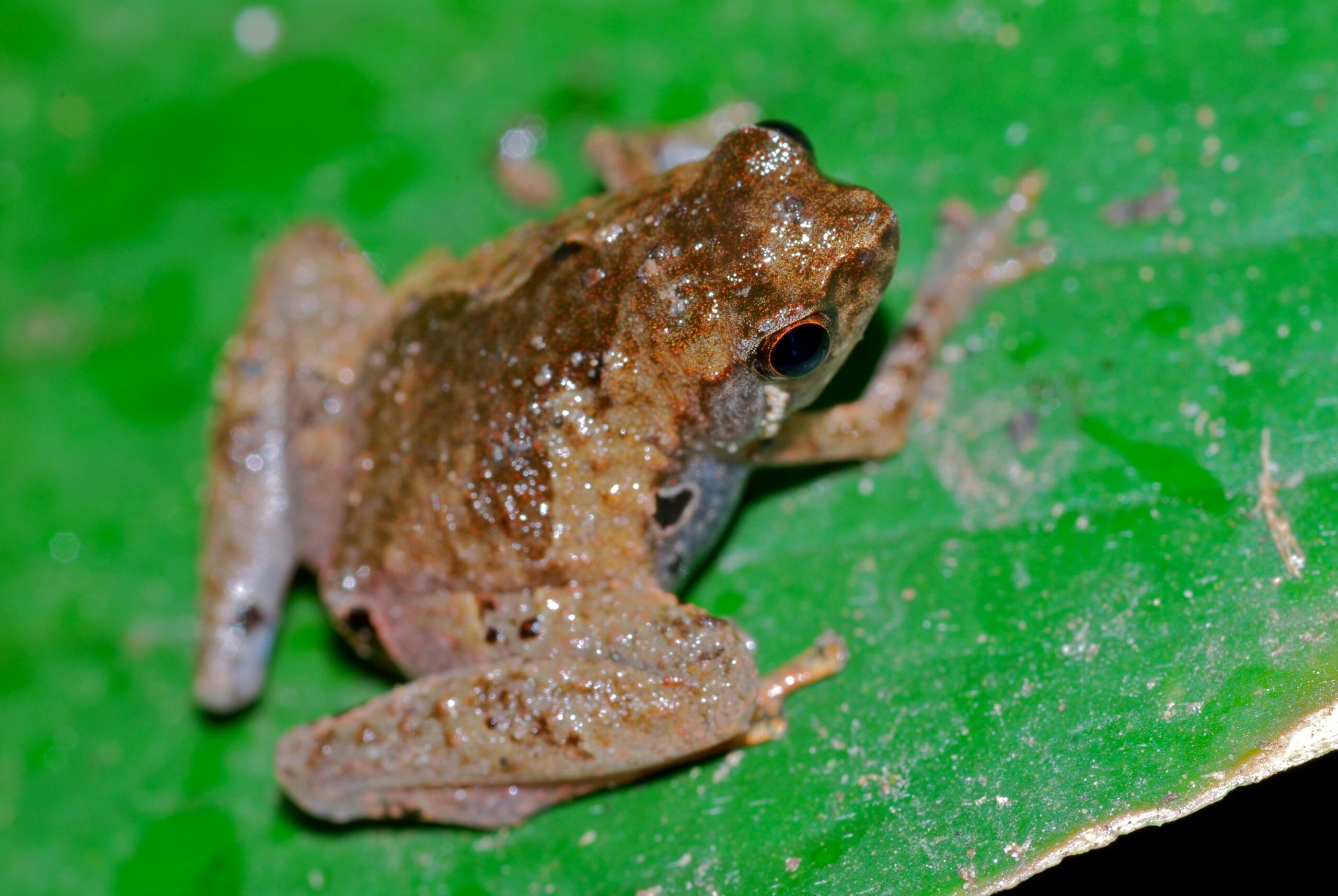
The Tree Hole Frog, native to Southeast Asia, lays its eggs in water-filled tree cavities, giving it its name. This small, arboreal amphibian is highly dependent on intact rainforests for its survival. Deforestation, particularly for palm oil plantations, has caused a severe decline in its numbers. Current population estimates are unknown, but conservationists are advocating for stronger protections of its habitat.
Boulenger’s Asian Tree Frog (Chiromantis doriae)
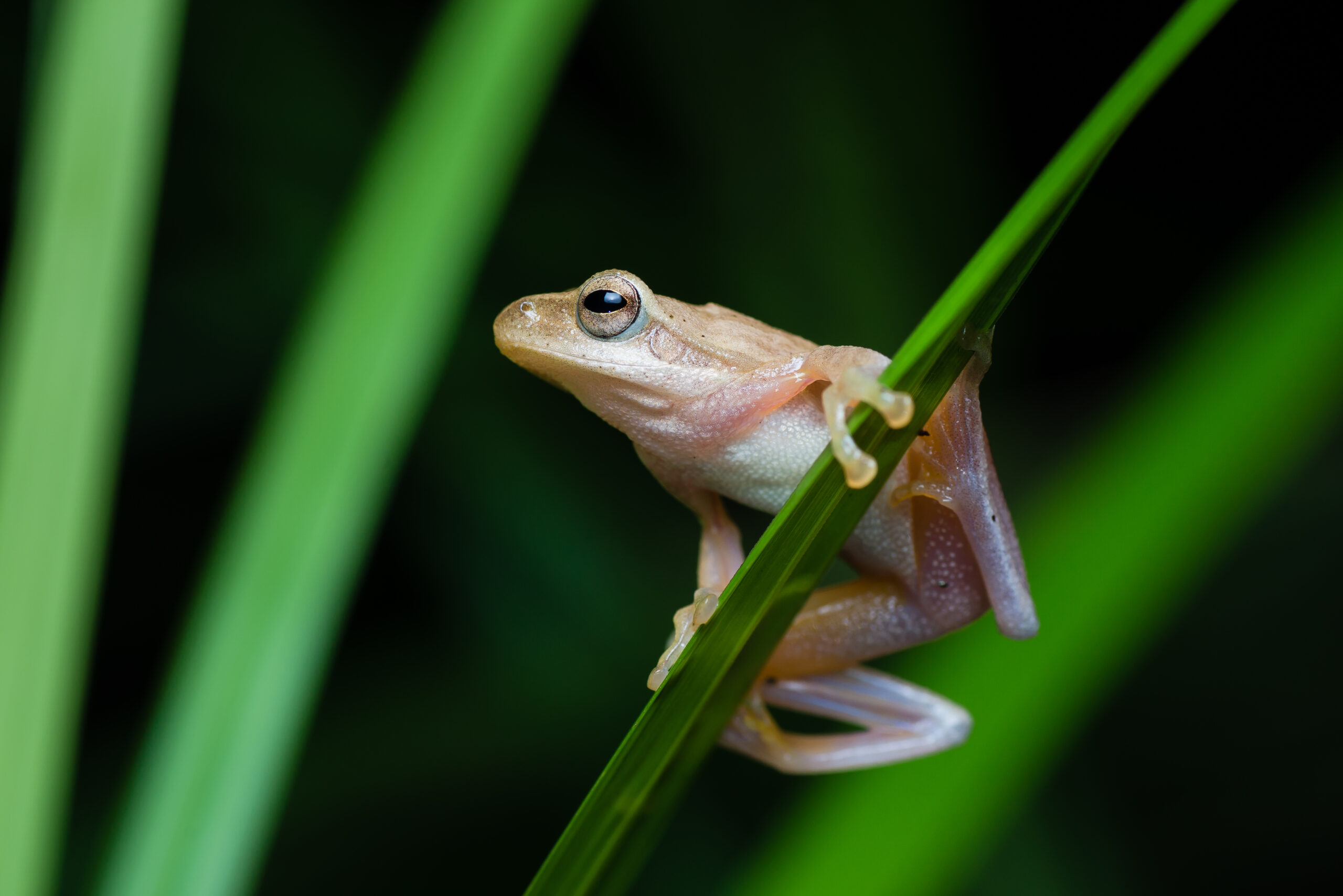
Boulenger’s Asian Tree Frog is found in the tropical forests of Southeast Asia and is distinguished by its long fingers and toes, perfect for tree climbing. It is highly adaptable but faces threats from deforestation and the pet trade. Populations have significantly decreased in recent years. Conservation efforts are focused on curbing habitat loss and promoting breeding programs in its native regions.
Mountain Chicken Frog (Leptodactylus fallax)
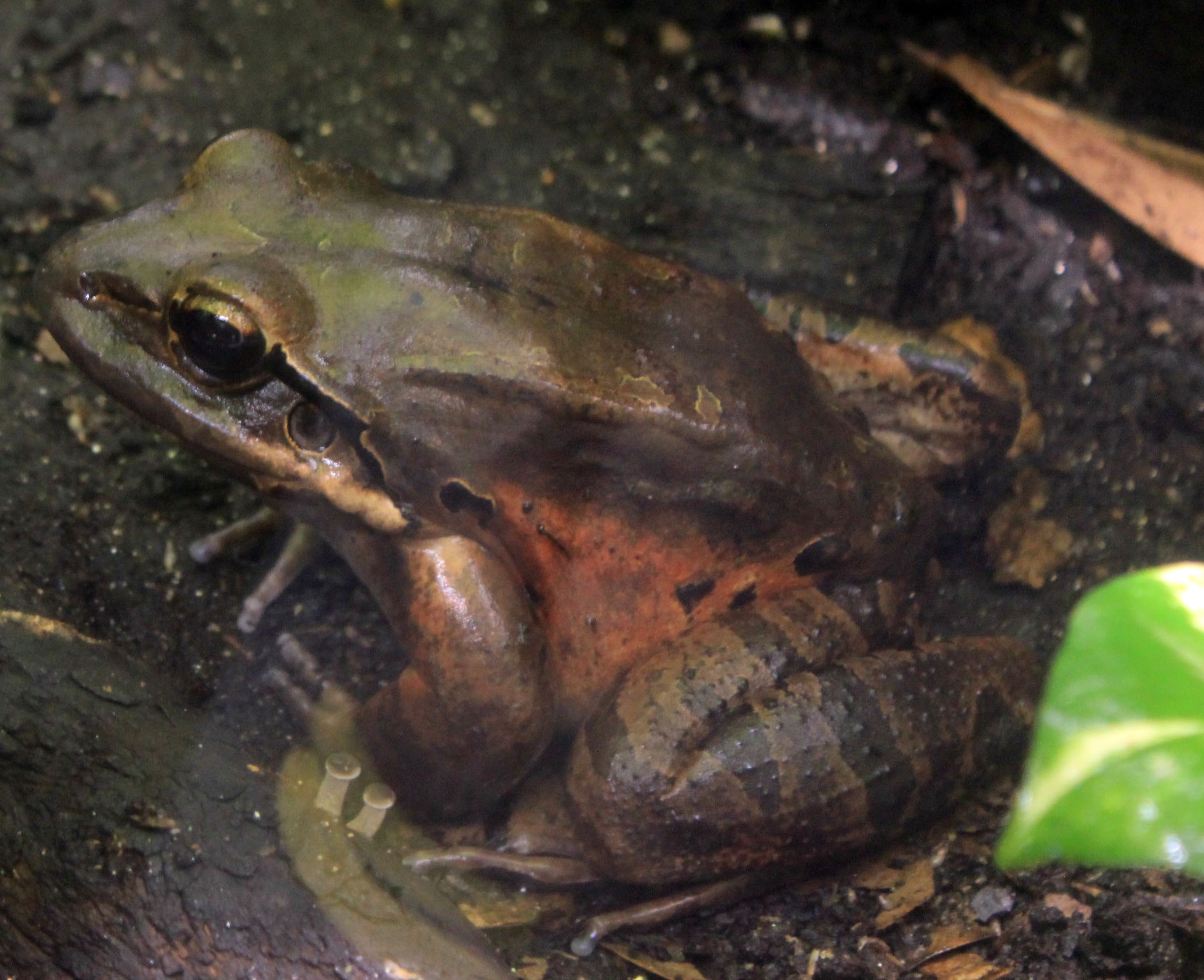
The Mountain Chicken Frog, once abundant on the Caribbean islands of Dominica and Montserrat, is now critically endangered. Despite its name, it is a large frog hunted for its meat, resembling the taste of chicken. A fungal disease, combined with habitat destruction and overhunting, has decimated its population, leaving only a few hundred individuals in the wild. Conservation programs are attempting to reintroduce captive-bred frogs back into their natural habitats.
Lemur Leaf Frog (Agalychnis lemur)
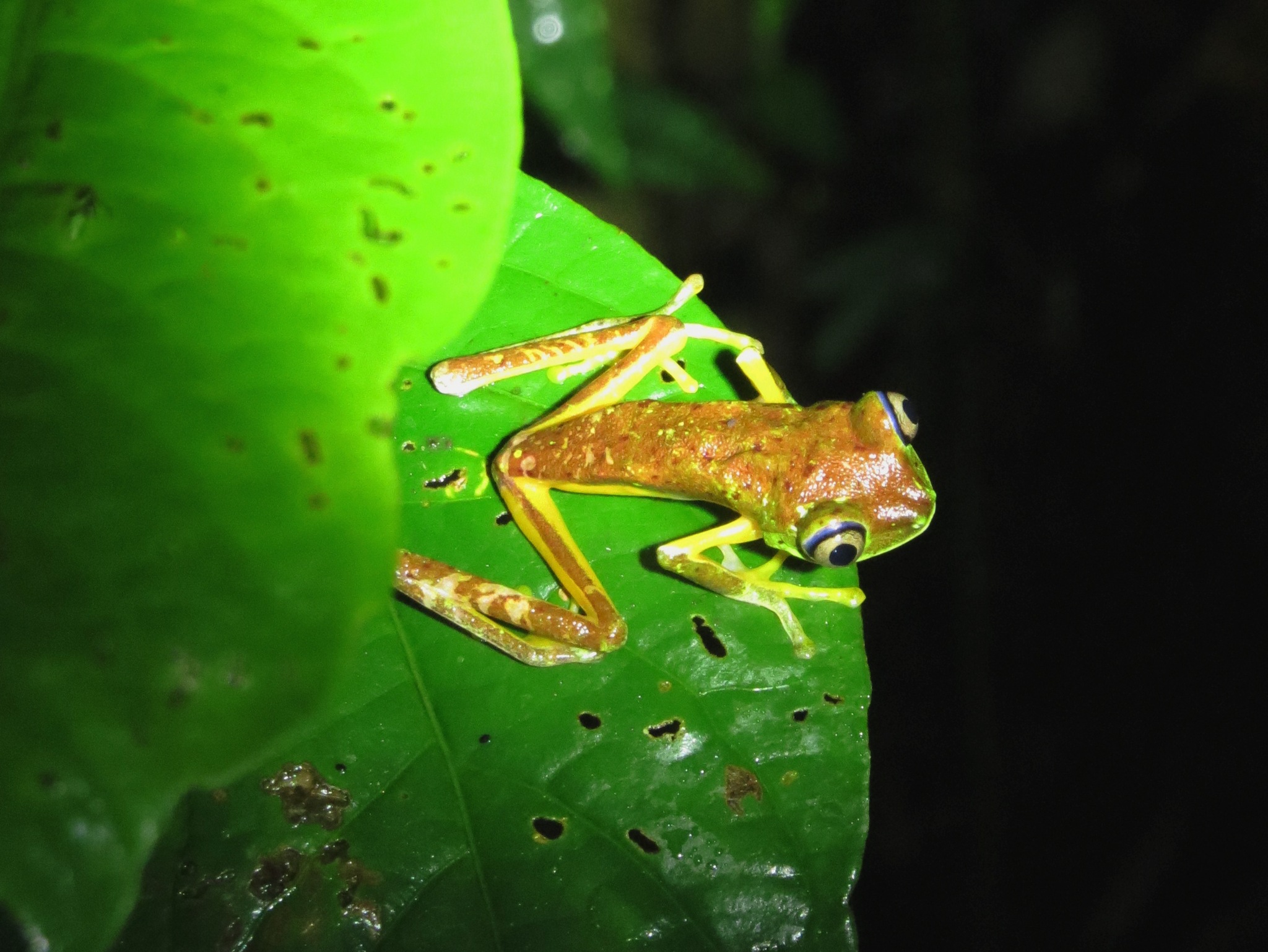
The Lemur Leaf Frog is a small, nocturnal frog native to the rainforests of Costa Rica and Panama. Known for its large eyes and slender body, it blends perfectly with the leaves it lives among. The population of this frog has declined sharply due to habitat loss and the spread of the deadly chytrid fungus. Fewer than 1,000 individuals are estimated to remain in the wild, prompting intensive conservation efforts to protect its fragile environment.
Corroboree Frog (Pseudophryne corroboree)
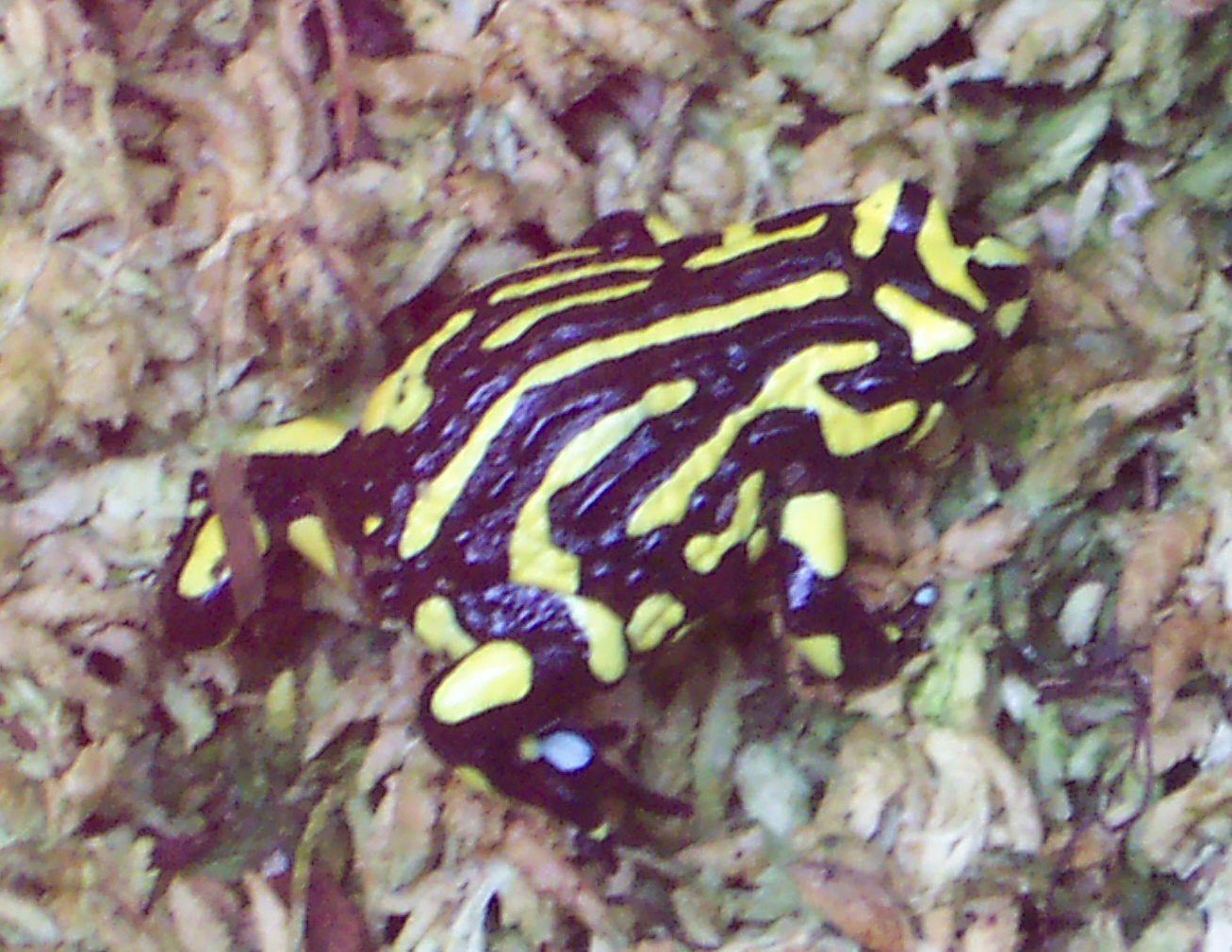
The Corroboree Frog, native to Australia’s alpine regions, is famous for its striking black and yellow stripes. This small frog produces its own toxic chemicals as a defense mechanism. However, the species has been decimated by the chytrid fungus, and fewer than 100 individuals are estimated to survive in the wild. Conservationists have developed captive breeding programs to help bolster their numbers and reintroduce them to protected habitats.
Vietnamese Mossy Frog (Theloderma corticale)
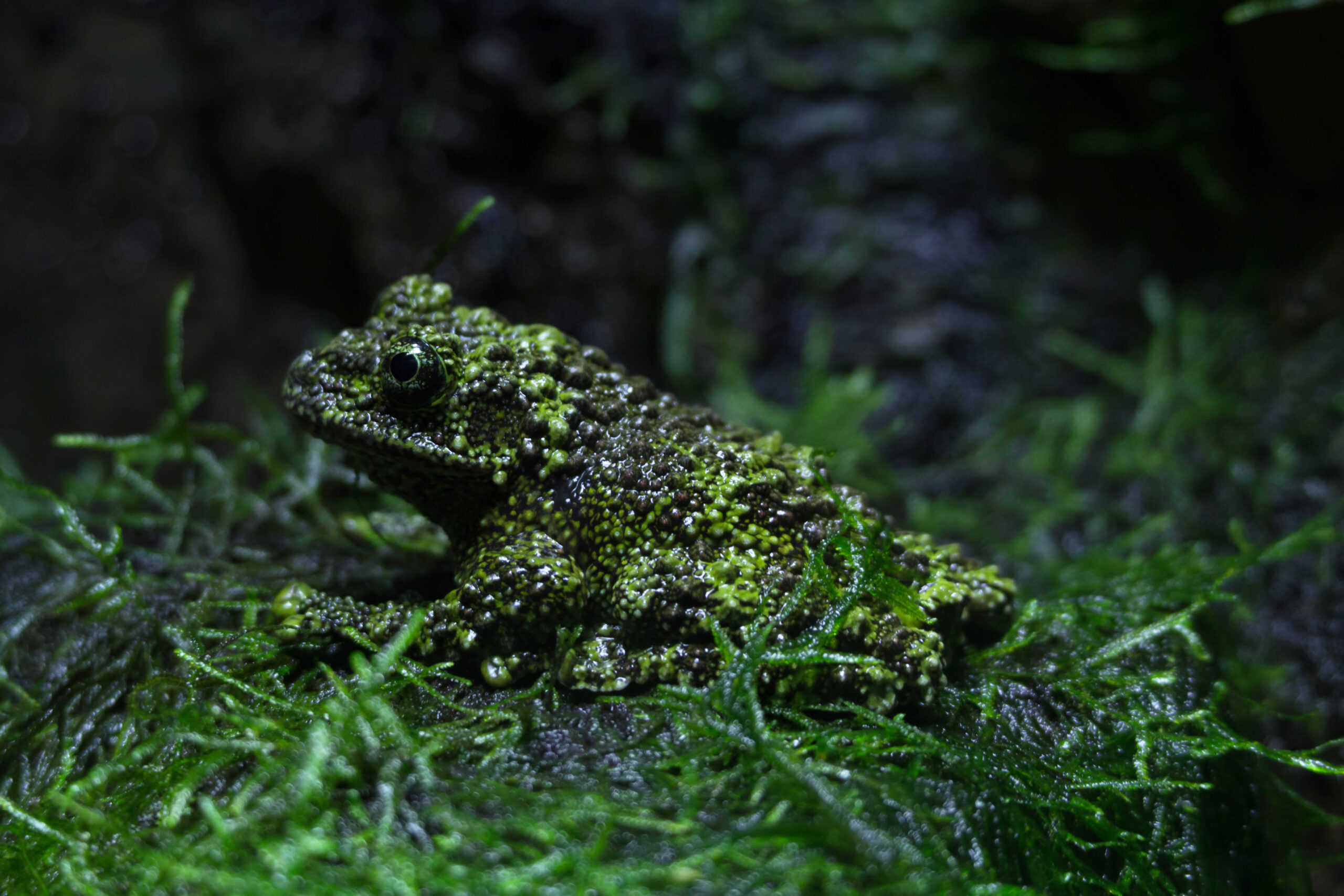
The Vietnamese Mossy Frog is a master of camouflage, resembling a patch of moss to avoid predators. It thrives in the rocky, forested areas of northern Vietnam. Unfortunately, habitat destruction and illegal trade have significantly reduced its population. Though exact numbers are unknown, the species is classified as near threatened, and conservation efforts focus on habitat preservation and combating illegal pet trade.
Green and Black Poison Dart Frog (Dendrobates auratus)
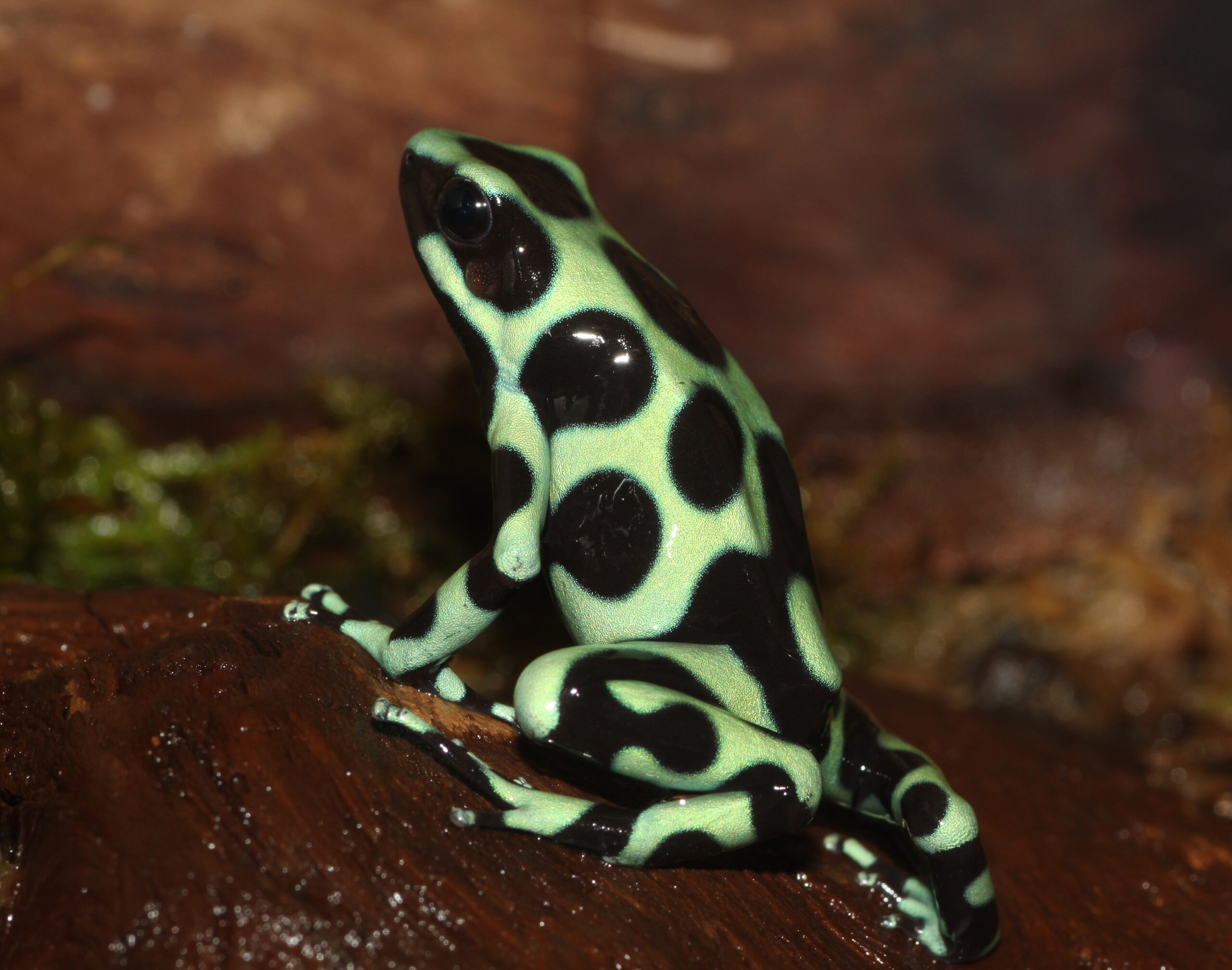
The Green and Black Poison Dart Frog, native to Central and South America, is known for its vivid colors and potent toxins. These tiny frogs play an important role in controlling insect populations, but deforestation and habitat destruction have placed them at risk. The wild population has decreased, though they remain relatively abundant in some protected areas. Conservation efforts are ongoing to protect their rainforest habitat.
Mexican Burrowing Toad (Rhinophrynus dorsalis)
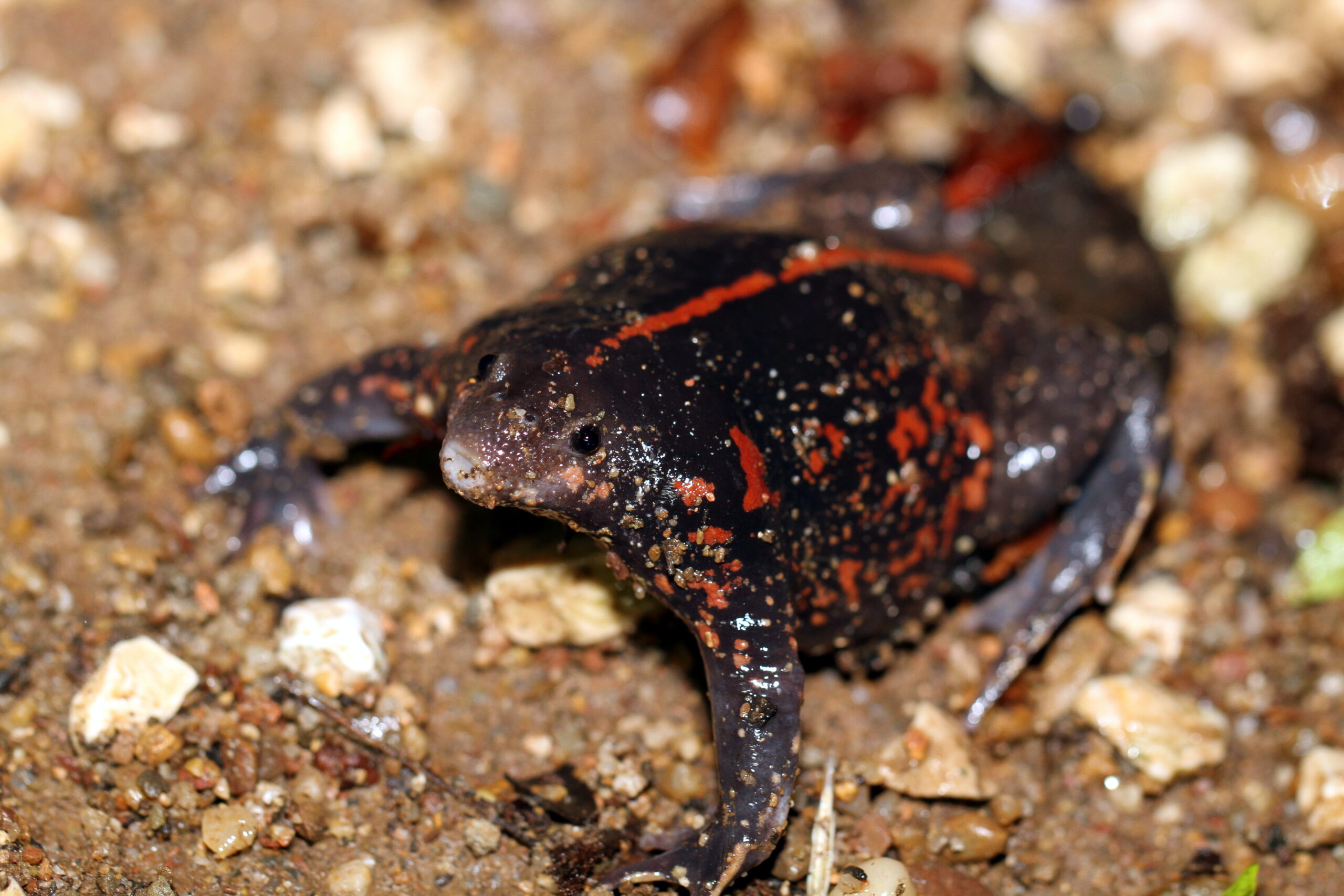
The Mexican Burrowing Toad is a unique amphibian with a round, plump body adapted for digging. Found in Mexico and Central America, it spends most of its life underground, emerging only during the rainy season to breed. Habitat destruction and agricultural expansion have reduced its numbers, but the species remains elusive, with populations difficult to monitor. Conservationists are working to better understand its habitat needs.
Sardinian Cave Salamander (Hydromantes genei)
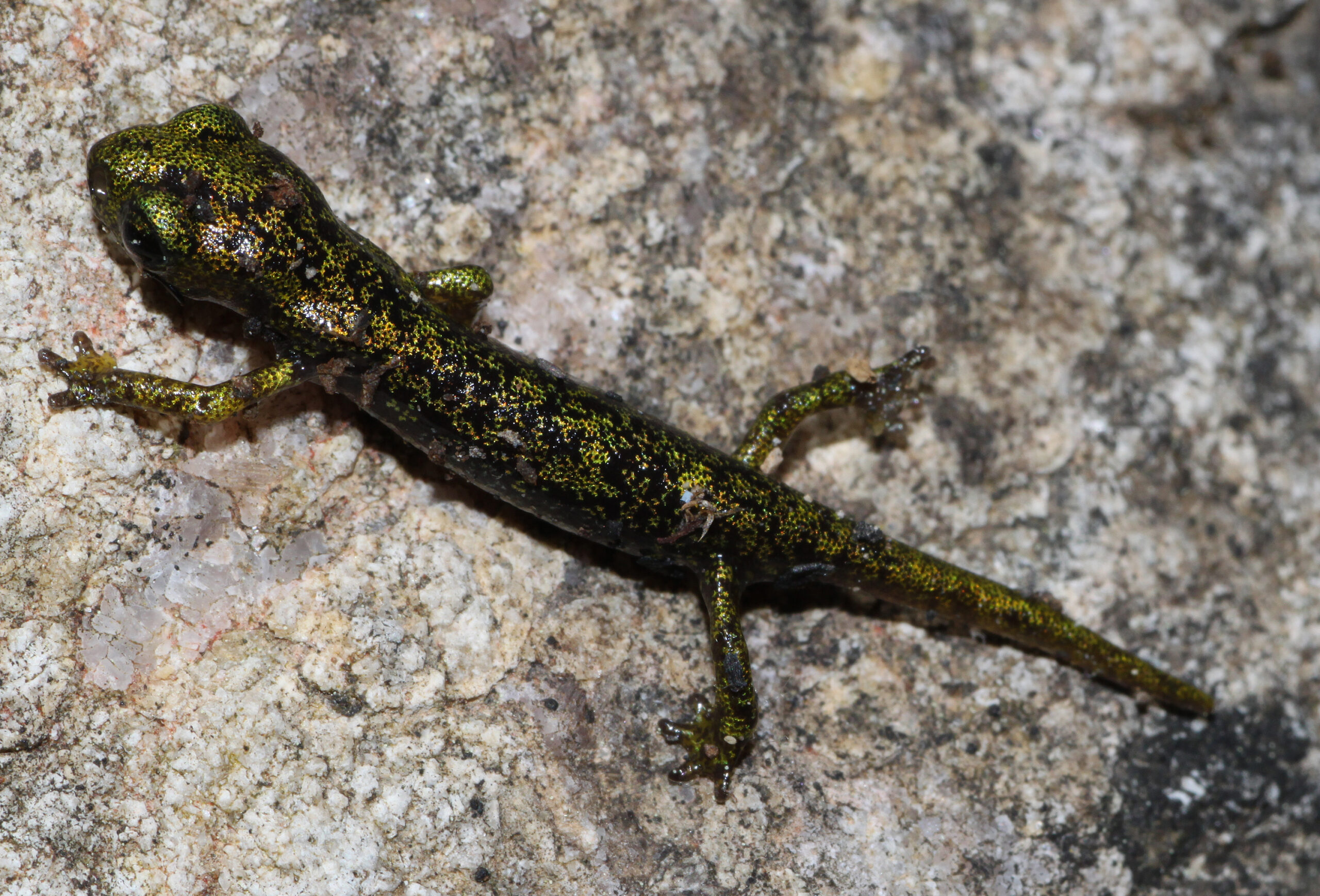
The Sardinian Cave Salamander is a rare species native to the island of Sardinia, Italy. This small amphibian inhabits limestone caves and underground streams, where it thrives in the cool, damp environment. It is highly adapted to life in darkness, relying on its other senses to navigate. Habitat degradation and human activity are major threats, with cave ecosystems particularly fragile. Protecting these unique cave habitats is crucial to the salamander’s future.
Japanese Giant Salamander (Andrias japonicus)

The Sardinian Cave Salamander is a rare amphibian that lives in the cool, damp caves of Sardinia, Italy. Adapted to life underground, it relies on its keen senses to navigate in darkness. Habitat destruction, particularly from human activity, has led to a decline in its population. With fewer than 10,000 individuals remaining, conservation efforts focus on protecting these fragile cave ecosystems.
Puerto Rican Crested Toad (Peltophryne lemur)
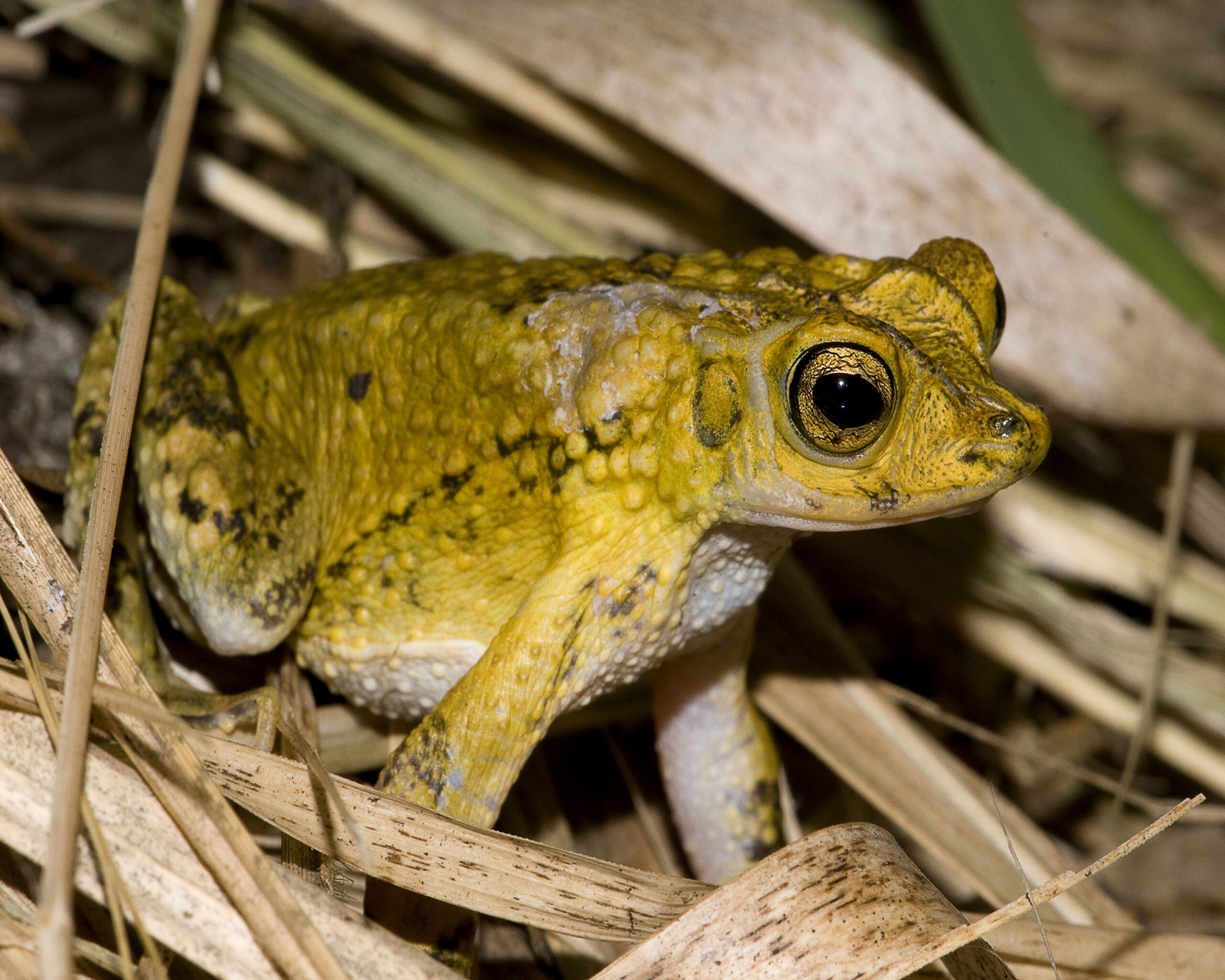
The Puerto Rican Crested Toad is a critically endangered amphibian native to Puerto Rico. Its bumpy skin and unique facial crest make it easily identifiable. Habitat destruction, particularly due to urbanization, has drastically reduced its population. Fewer than 1,000 individuals are left in the wild, with ongoing efforts focused on habitat restoration and captive breeding to ensure its survival.
This article originally appeared on Rarest.org.
More from Rarest.org
13 Unique Cuisines From Isolated Regions Around the World

The world is full of culinary treasures, with some of the most unique flavors found in the most remote places. Read More.
9 Rarely Seen Vintage Fire Trucks from Across the Decades

Vintage fire trucks are a fascinating glimpse into the history of firefighting. From their bold designs to their innovative features, these rare machines showcase the evolution of fire safety technology. Read More.
10 Beautifully Preserved Ancient Cities Buried Beneath the Earth
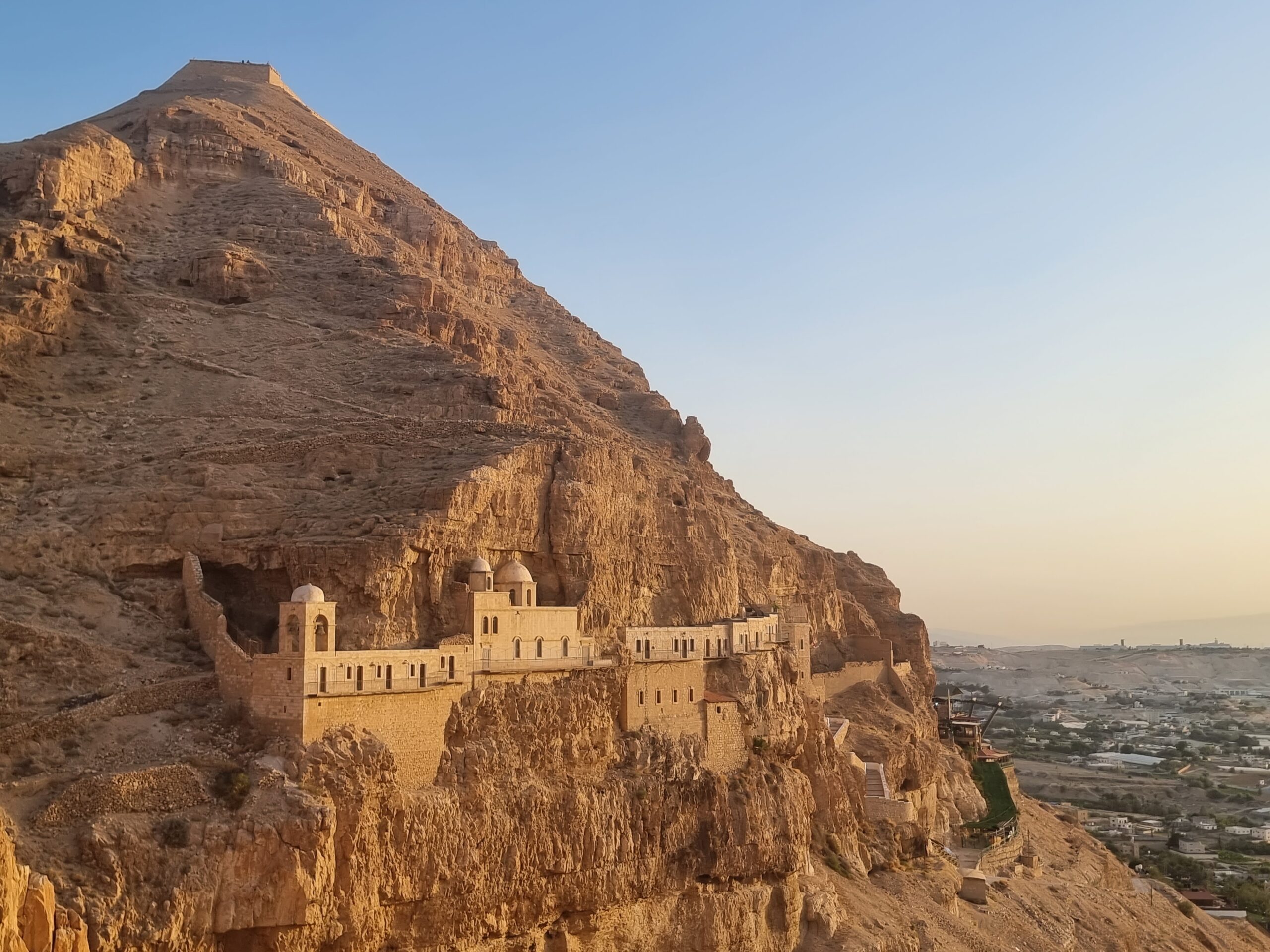
Ancient cities hold mysteries of civilizations long gone, hidden beneath the earth for centuries. These cities, once bustling with life, are now beautifully preserved time capsules of history. Read More.
